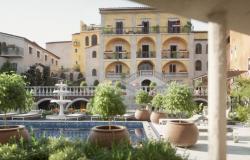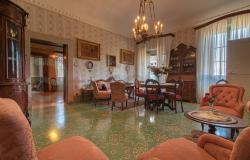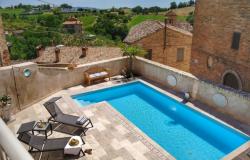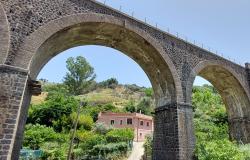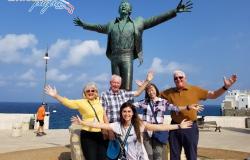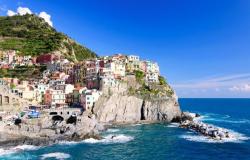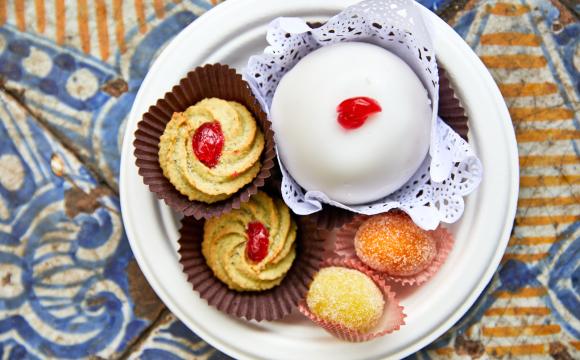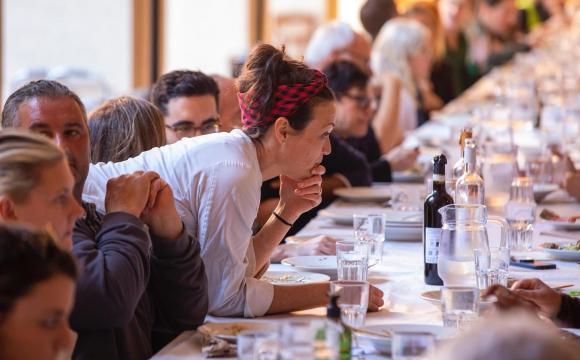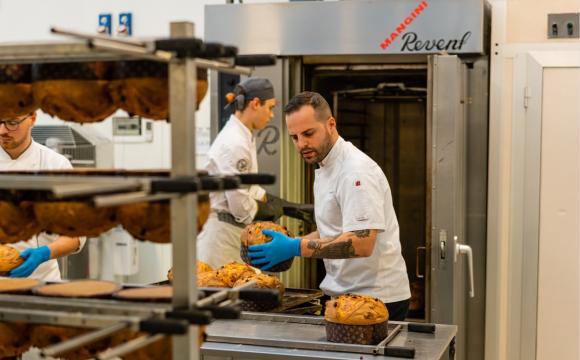The great burgeoning of intellectual life, the Renaissance, which exploded in late 13th- century Northern Italy, resulted from a
philosophical shift, a rift that was eventually to separate religion and science. The new philosophy, humanism, sprang from the idea that
the only way to know about the world is by direct experience. It rejected sterile medieval received wisdom for a new-found spirit of
sceptical enquiry. From this came the scientific method, the rediscovery of the Classical age, and new ways of thinking about the relation between God and man, free will, and individuality.
In painting, this manifested itself as a move away from the flat Byzantine image to a more naturalistic, three-dimensional, style in which the artist attempted to depict something of the character and emotions of the figures they portrayed. We know something of the artists who were working at this time from Giorgio Vasari’s monumental Lives of the Artists. Writing in the mid-16th century, during the zenith of the high Renaissance, Vasari argued that the revolution underpinning western art began in Florence with Giotto.
On the face of it, this seems uncontroversial. Giotto’s frescoes in the Arena Chapel in Padua, commissioned by the Scrovegni family and
executed between 1304 and 1306, are remarkable enough. However, it is arguably with the altarpiece for the Florentine Church of the Ognissanti, finished about 1310, that he first achieves the realism we associate with the Renaissance. Here we see a Madonna sculpted in
light, her underlying shape revealed, rather than covered, by her clothing, the epitome of full-breasted motherhood, who gazes directly at us with all-knowing tranquillity. Her immediacy was probably too much for the commissioners of this work, for within a few years it had been replaced by a more traditional polyptych.
The Ognissanti altarpiece is now in the Galleria degli Uffizi (Florence), where it sits between two altarpieces with the same subject matter, by Duccio and Cimabue (Giotto’s teacher), done in the last few years of the 13th century. These other works are scarcely less pleasing, but the juxtaposition starkly emphasises Giotto’s innovations. The early Renaissance was fuelled by rich patrons. Two such were the bankers Bardi and Peruzzi who commissioned chapels decorated by Giotto in Santa Croce in Florence. Here, his originality becomes more explicit. In the ‘Trial by Fire’, a fresco in the Bardi chapel produced sometime between 1315 and 1320, the dynamic of the characters tells
a story with great force and economy. Muslim leaders, challenged to a test of their faith, slink away shamefaced, despite the imperious
command of the sultan, while St Francis steps calmly forward into the flames. That the Santa Croce frescoes were studied and drawn by
artists of the stature of Michelangelo and Raphael is sure testimony to their greatness.
Despite these stunning achievements of Giotto, it is now seriously suggested that it was neither he who was responsible for the Renaissance revolution, nor did it start in Florence. A number of art historians are now arguing that Giotto was foreshadowed by the almost unknown Roman artist Pietro Cavallini (1243-1330). Unfortunately, most of his work has been destroyed and he is best known for a large-scale fresco on the life of the Virgin, dated to 1291, in the 4th-century church of Santa Maria in Trastevere (Rome). Long before the current controversy erupted it was realised that Cavallini’s style was moving away from the Byzantine and towards the new realism, but he has languished somewhat in a historical backwater. After all, Vasari was a Florentine and his argument that the Renaissance started in Florence with Giotto may simply be a bit of old-fashioned campanilismo, given the enmity that existed between Florence and Rome at the time.
Tommaso Strinati, a young medieval art historian at the University of Rome, suspected that frescoes by Cavallini might have survived a
16th-century rebuilding of Santa Maria in Aracoeli, a small Franciscan church on the Capitoline hill, originally erected in 1285. Like so
many medieval churches in Italy, inside it has been spoiled by baroque artifice. Strinati noticed, high up in one of the dingy side chapels,
a piece of fresco showing a column which had been exposed by some cleaning and recognised that more fresco must lie beneath. Sure enough, stripping away baroque over-painting revealed fresco fragments; a Madonna and child, saints and a blood-red medieval tower. Remarkably, they clearly show the neo-classical influence, perspective and a use of light which are hallmarks of the Renaissance. What makes this finding so exciting? Firstly, it may have been done as early as 1290. Secondly, the painted column depicts a medieval technique, Cosmati-work, invented by a family of Roman artisans, in which inlaid bands of opus sectile (cut stone) are used as decoration. Thirdly, similar columns are to be found in ‘The Last Judgement’, a late 13th-century fresco by Cavallini in Santa Cecilia in Trastevere. The implication is that a Roman artist, possibly Pietro Cavallini, was responsible for the Renaissance frescoes in Santa Maria in Aracoeli, and these seem to pre-date Giotto.
In late medieval times, artists were regarded as little more than artisans or craftsman. In Florence they did not even have their own Guilds but belonged to the Guild of Physicians and Apothecaries, and it is not unusual to find works unattributed. This is the case with the fresco cycle of the life of St Francis in the basilica at Assisi.
Although traditionally associated with Giotto, many experts feel that the stylistic differences between the St Francis frescoes and those of
the Arena Chapel are too great for them to have been done by the same hand. Bruno Zanardi, who restored the Assisi frescoes between
1978-1982, argues that their method of execution is Roman rather than Florentine. Frederico Zico, a pre- eminent expert on Italian art, went further, stating in 1997 that several of the frescoes at Assisi were not by Giotto, but by Cavallini. Indeed, there is striking evidence
that links Cavallini to the Basilica of St Francis. The medieval city tower in Santa Maria in Aracoeli is strikingly similar to a tower that
adorned one of the Assisi ceiling frescoes destroyed by the 1997 earthquake. More dramatically, columns showing Cosmati-work, just like those in Santa Maria in Aracoeli, also appear in the Assisi fresco cycle.
Work began on the cycle of St Francis in Assisi in 1288, when Giotto would have been only 22. If the fresco in Aracoeli pre-dates this, then
it would mean that what is universally regarded as the first great fresco cycle of the Renaissance was done by a Roman school of artists in
which Cavallini would undoubtedly have been a key player. This would shift forever our view of when, where and who started the artistic Renaissance.

